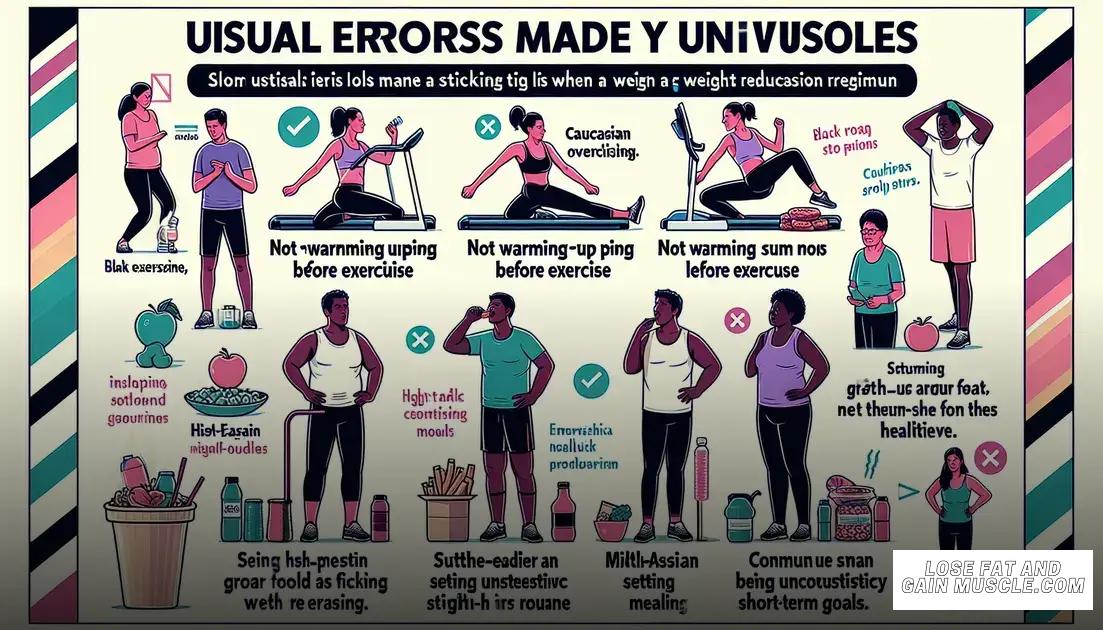What is the 30/30/30 Rule for Weight Loss? Unlock Effective Strategies
The 30/30/30 rule for weight loss involves dedicating 30 minutes to exercise, 30 minutes to meal planning, and 30 minutes to mental wellness activities daily. This balanced approach promotes effective weight loss and a healthier lifestyle, making it easier to achieve and maintain your fitness goals.
Are you curious about what is the 30/30/30 rule for weight loss? This innovative approach combines exercise, nutrition, and mindset to yield effective results in your weight loss journey. With its simple yet powerful framework, the 30/30/30 rule has garnered attention for its effectiveness. Dive into this article to learn how to leverage this rule for your health goals.
Understanding the 30/30/30 Rule
The 30/30/30 rule is an effective method for weight loss that focuses on balancing three critical components: exercise, nutrition, and mindset. This approach encourages individuals to dedicate thirty minutes to each of these aspects daily, promoting a holistic journey towards health and fitness.
Breaking Down the 30/30/30 Rule
The first 30 minutes should be committed to physical activity. Engaging in cardiovascular workouts, strength training, or a combination of both can significantly boost your metabolism and support weight loss. Whether it’s jogging, swimming, or going to the gym, find an activity you enjoy and stick with it.
The second 30 minutes is to be spent on meal preparation and nutrition education. Focus on planning balanced meals that include lean proteins, whole grains, and plenty of fruits and vegetables. Understanding portion sizes and nutritional requirements can help you make smarter food choices and avoid unnecessary calories.
The final 30 minutes should be allocated for mental wellness activities such as meditation, journaling, or yoga. Cultivating a positive mindset is essential for sustaining your weight loss efforts. By taking time to reflect and relax, you can reduce stress, which often leads to weight gain.
Why the 30/30/30 Rule Works
This structured approach addresses the different facets of health. By equally distributing time among exercise, nutrition, and mental health, individuals can develop a well-rounded lifestyle that fosters long-term success in weight management. This method not only improves physical health but also enhances mental resilience, making it easier to stay motivated and stick to goals.
The Science Behind Weight Loss

The science behind weight loss is complex but revolves around a few fundamental principles. At its core, weight loss occurs when you consume fewer calories than you burn. This concept is known as caloric deficit and is essential for anyone looking to lose weight.
Understanding Caloric Intake
Caloric intake refers to the total number of calories you consume from food and beverages. Tracking your caloric intake can help you adjust your diet to achieve your weight loss goals. Make sure to choose nutritious foods that provide essential vitamins and minerals while keeping calorie counts low.
Energy Expenditure Explained
Energy expenditure includes all calories burned throughout the day, which consists of three main components: basal metabolic rate (BMR), physical activity, and the thermic effect of food. BMR accounts for the calories your body uses at rest, while physical activity includes exercise and daily movements. The thermic effect of food is the energy used during digestion.
The Role of Macronutrients
Understanding macronutrients—proteins, carbohydrates, and fats—is vital for effective weight loss. Each macronutrient plays a different role in your body. For instance, proteins help build and repair tissues, while healthy fats support cell function. Carbohydrates, particularly whole grains, provide energy. Balancing these macronutrients can optimize weight loss while ensuring your body gets the fuel it needs.
The Impact of Metabolism on Weight Loss
Your metabolism affects how quickly you burn calories. Factors like age, sex, and muscle mass can influence your metabolic rate. Generally, individuals with more muscle mass burn more calories at rest. Building muscle can be beneficial for long-term weight management.
Hormonal Influences
Weight loss is also affected by hormones such as insulin, cortisol, and ghrelin. Insulin regulates blood sugar levels and fat storage, while cortisol is related to stress response. Ghrelin is known as the hunger hormone, signaling your body to eat. Understanding these hormonal influences can provide insights into why individuals may struggle with weight loss.
Behavioral Aspects
Lastly, behavior plays a crucial role in weight loss. Factors like stress, sleep, and emotional eating can impact your relationship with food and your ability to stick to a healthy lifestyle. Developing positive habits and coping strategies is vital for sustaining weight loss.
Implementing the 30/30/30 Rule
Implementing the 30/30/30 rule for weight loss requires a clear plan and commitment. This rule is straightforward: dedicate 30 minutes to exercise, 30 minutes to nutrition, and 30 minutes to mindset each day. By setting aside this time, you can make meaningful progress towards your weight loss goals.
Step 1: Setting Up Your Exercise Routine
Start by choosing an activity you enjoy. This could be running, cycling, or attending a fitness class. Aim for at least 30 minutes of physical activity. You can break it up into shorter sessions if needed. For instance, try to do three 10-minute bursts of exercise throughout the day.
Step 2: Planning Balanced Meals
Nutrition is key in the 30/30/30 rule. Spend 30 minutes planning and preparing meals. Focus on whole foods like fruits, vegetables, lean proteins, and whole grains. Create a weekly meal plan to help you stay organized and avoid unhealthy choices.
Step 3: Cultivating a Positive Mindset
Take time for your mental health by working on your mindset. Spend 30 minutes daily on activities like meditation, journaling, or engaging in a hobby. Developing a positive attitude can help you stay motivated and overcome obstacles in your weight loss journey.
Step 4: Tracking Your Progress
Keep a journal or use an app to track your exercise, meals, and mindset activities. This helps you see what’s working and what needs adjustment. Being accountable can motivate you to stick to your routine.
Step 5: Making Adjustments as Needed
If you find that the 30/30/30 rule is not yielding the results you expected, don’t hesitate to make adjustments. This could mean altering your workout intensity, changing your meal portions, or trying new mindset practices.
Step 6: Staying Consistent
Consistency is crucial for the success of the 30/30/30 rule. Aim to follow this plan most days of the week. Building a habit takes time, so be patient with yourself and celebrate small victories along the way.
Common Mistakes to Avoid

When following the 30/30/30 rule for weight loss, it is essential to avoid common mistakes that can hinder progress. Understanding these pitfalls can help you stay on track and reach your goals more effectively.
1. Skipping the Exercise Component
One of the most frequent mistakes is neglecting the first 30 minutes dedicated to exercise. Physical activity is vital for burning calories and boosting metabolism. Ensure you make time for it to maximize the effectiveness of the 30/30/30 rule.
2. Poor Meal Choices
When preparing meals, avoid processed and high-calorie foods. Instead, focus on whole foods rich in nutrients. Eating junk food can sabotage your efforts and make it harder to achieve a caloric deficit.
3. Inconsistent Routine
Inconsistency can lead to frustration and slow progress. Make a commitment to follow the 30/30/30 rule most days of the week. If you don’t stick to it regularly, the benefits may be limited.
4. Ignoring Mindset
Neglecting the importance of mental health can be a significant mistake. The final 30 minutes should be dedicated to activities that promote a positive mindset. This can help you manage stress and stay motivated throughout your weight loss journey.
5. Not Tracking Progress
Failing to track your exercise, meals, and mindset activities can lead to a lack of accountability. Keeping a journal or using an app can help you see what is working and where you need to improve.
6. Setting Unrealistic Goals
Another common mistake is setting goals that are too ambitious. While it’s important to aim high, make sure your goals are achievable. Start small, and gradually increase the intensity or duration of your efforts.
7. Giving Up Too Soon
Weight loss takes time, and you may not see immediate results. Don’t get discouraged if progress seems slow. Stay committed to the process, and remember that consistency is key.
Real-Life Success Stories
Real-life success stories can be incredibly inspiring when following the 30/30/30 rule for weight loss. These individuals have transformed their bodies and lives by dedicating time to exercise, nutrition, and mindset.
Success Story 1: Sarah’s Journey
Sarah was struggling to lose weight after having two children. She decided to implement the 30/30/30 rule. For her first 30 minutes, she began walking for exercise. Over time, she increased her activity level and even joined a local gym. Her nutrition improved as well. She learned to meal prep using fresh ingredients, and she spent time exploring new recipes. After six months, Sarah lost 50 pounds and gained confidence along the way.
Success Story 2: Mark’s Transformation
Mark struggled with emotional eating and found it hard to lose weight. He started following the 30/30/30 rule by dedicating 30 minutes to physical activity, like cycling. Next, he focused on his meals. Mark learned to cook healthy dishes that satisfied his cravings. Importantly, he used the last 30 minutes of his day for reflecting through journaling. This helped him uncover his feelings around food. Within a year, Mark lost 70 pounds and transformed his relationship with food.
Success Story 3: Jenna’s Commitment
Jenna was busy with work and family, making it tough to prioritize her health. After hearing about the 30/30/30 rule, she made a commitment to herself. She carved out 30 minutes each morning for exercise before everyone else woke up. Jenna planned her meals during her lunch break and spent evenings doing yoga to relax her mind. Through diligence and determination, Jenna was able to lose 40 pounds and improved her stress levels.
Success Story 4: Tom’s Team Approach
Tom joined a weight loss support group to enhance his journey with the 30/30/30 rule. Together, they worked out for the first 30 minutes, shared nutritious recipes, and talked about their goals. Tom kept himself accountable, and having a group made it easier to stick with his plan. After a year, he successfully lost 60 pounds and formed lasting friendships along the way.
Tips for Staying Motivated

Staying motivated while following the 30/30/30 rule for weight loss can be challenging. Here are some effective tips to keep your spirits high and maintain your momentum.
1. Set Clear Goals
Start by setting achievable and specific goals for your weight loss journey. Breaking down your goals into smaller milestones makes them less overwhelming, such as aiming to lose 5 pounds in a month.
2. Create a Routine
Develop a daily routine that includes dedicated time for exercise, meal prep, and mindset activities. Having a schedule helps you stay accountable and builds healthy habits over time.
3. Find a Workout Buddy
Consider finding a friend or joining a support group to share your journey. Exercising with someone else can make workouts more enjoyable and help you stay committed to your goals.
4. Celebrate Small Wins
Recognize and celebrate your progress, no matter how small. Whether it’s a new workout achievement or choosing a healthy meal, celebrating these moments will boost your motivation.
5. Keep a Journal
Writing down your experiences can help you reflect on your journey. Track your workouts, meals, and feelings. Seeing your progress in black and white can be a great motivator.
6. Mix Up Your Routine
Avoid boredom by mixing up your workouts and meals. Trying new exercises or recipes can reinvigorate your commitment and keep things exciting.
7. Stay Positive
Maintain a positive mindset throughout your journey. Surround yourself with uplifting influences, whether friends, family, or motivational content. Keeping a positive attitude is key to overcoming challenges.
8. Visualize Success
Take a few moments each day to visualize your success. Picture yourself achieving your goals and feeling great. This mental practice can enhance your motivation and help manifest positive outcomes.
9. Educate Yourself
Understanding the science behind weight loss and the 30/30/30 rule can provide clarity and motivation. The more you know, the more empowered you will feel to make informed choices.
10. Be Patient
Remember, weight loss takes time. Stay patient with yourself and trust the process. Understand that setbacks are a part of the journey and that persistence leads to results.
In Summary: The 30/30/30 Rule for Weight Loss
The 30/30/30 rule offers a simple yet effective strategy for achieving weight loss and promoting overall health. By dedicating 30 minutes to exercise, 30 minutes to meal planning, and 30 minutes to mindset activities, you create a balanced approach that addresses both physical and mental well-being.
As you embark on this journey, remember to stay motivated by setting clear goals, tracking your progress, and avoiding common pitfalls. Real-life success stories highlight how others have found success using this methodology, proving that it’s not just a theory but a practical approach that can yield tangible results.
Utilizing tips for staying motivated, such as finding a workout buddy and celebrating small wins, will help ensure that you stick to your plan even when challenges arise. Ultimately, the key to success is consistency and commitment.
By following the 30/30/30 rule, you can unlock effective strategies for weight loss and a healthier lifestyle. Don’t hesitate to start your journey today!
FAQ – Frequently Asked Questions about the 30/30/30 Rule for Weight Loss
What is the 30/30/30 rule?
The 30/30/30 rule is a weight loss strategy that involves dedicating 30 minutes to exercise, 30 minutes to meal planning, and 30 minutes to mindset activities each day.
How can I implement the 30/30/30 rule in my daily routine?
You can implement the 30/30/30 rule by creating a structured daily schedule that includes time for physical activity, healthy meal prep, and mental wellness practices.
What types of exercises should I do for the first 30 minutes?
Any type of exercise that you enjoy is beneficial. This can include walking, running, cycling, strength training, or joining a fitness class.
Why is mindset important in the 30/30/30 rule?
Mindset is crucial as it helps you maintain motivation and cope with challenges. Activities like meditation, journaling, or simply reflecting can enhance your mental health.
What are some common mistakes to avoid when following the 30/30/30 rule?
Common mistakes include skipping the exercise component, poor meal choices, inconsistency in your routine, and neglecting mental wellness activities.
Can I see real-life success stories related to the 30/30/30 rule?
Yes, many individuals have successfully lost weight by following the 30/30/30 rule. These stories often highlight the importance of dedication and finding a support system.













